
Lower Yellowstone Falls and the Grand Canyon of the Yellowstone. Photographed 09/05/2014 at Yellowstone National Park, Wyoming.
Yellowstone National Park protects a vast array of spectacular and invaluable natural features within its 3469 square miles (8985 square km) in Wyoming, Montana, and Idaho. It contains the world’s largest collection of geysers as well as many other geothermal features like hot springs, fumaroles, and mud pots. Expansive mountains, canyons, and valleys harbor serene rivers and magnificent waterfalls. And across the dense forests and lush valleys, innumerable wildlife call this place home.
Although this region was known to various Native American tribes for thousands of years, it didn’t become known to European Americans until 1807. John Colter, a member of Lewis and Clark’s 1804-1806 Corps of Discovery Expedition, decided to leave the group during their return from the Pacific coast. Wanting to become a fur trader, he spent the winter of 1806-1807 wandering alone throughout the geothermal areas of what is now Yellowstone.
When Colter returned to civilization he told others about this land of “hidden fires, smoking pits, noxious steams, and smell of brimstone” but no one believed him. Many people mockingly referred the place from his fanciful stories as “Colter’s Hell.”

Beryl Spring photographed 09/05/2014 at Yellowstone National Park, Wyoming.
Subsequent exploration would vindicate Colter, however, and ignite a great deal of interest in the region. This interest would lead to the creation of the first national park in the world, and a new public concern for protecting the last few remaining wild places.
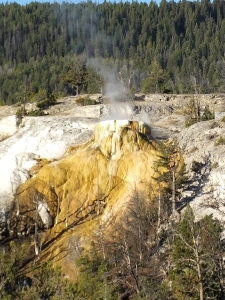
Upper Terrace near Mammoth Hot Springs. Photographed 09/06/2014 at Yellowstone National Park, Wyoming.
“Be it enacted by the Senate and House of Representatives of the United States of America…That the tract of land in the territories of Montana and Wyoming, lying under the headwaters of the Yellowstone River…is hereby reserved and withdrawn from settlement, occupancy, or sale under the laws of the United States, and dedicated and set apart as a public park or pleasuring ground for the benefit and enjoyment of the people…”

Roosevelt Arch at the North Entrance, dedicated by President Theodore Roosevelt in 1903. Photographed 09/06/2014 at Yellowstone National Park, Wyoming.
With these words the United States created the world’s first national park on March 1, 1872. The land in what is now Yellowstone National Park so impressed and inspired the explorers, artists, politicians, and people who witnessed or heard about it that they quickly worked to set it aside as a protected area for posterity. The concept of a “national park” had never before been conceived by mankind, but neither had the superlative features of this unique and wonderful place.

Grand Prismatic Spring in the Midway Geyser Basin. The most beautiful thing I have ever seen in nature. Photographed 09/07/2014 at Yellowstone National Park, Wyoming.
Numerous geothermal areas decorate the surface of Yellowstone, fueled by the presence of a massive supervolcano beneath the surface. Mammoth Hot Springs, West Thumb, and the Norris, Lower, Midway, and Upper Geyser Basins are the literal hot spots in this park.

Part of Fountain Paint Pot in the Lower Geyser Basin. Photographed 09/05/2014 at Yellowstone National Park, Wyoming.
Each location features bubbling mudpots, steaming fumaroles, sporadic geyser eruptions, and crystal-clear hot springs colored only by heat-loving bacteria and the minerals upwelling from deep below.

Black Pool in the West Thumb Geyser Basin. Photographed 09/05/2014 at Yellowstone National Park, Wyoming.
Although many geysers can be found throughout Yellowstone, the most famous and most reliable is Old Faithful. This massive geyser erupts every 60-70 minutes like clockwork.
Away from these hot spots cooler waters prevail. The largest body of water is Yellowstone Lake, dominating the landscape in the southeastern area of the park.
Just north of here is Indian Pond, a calm and reflective pool often occupied by waterfowl.
To the east of Yellowstone Lake is Sylvan Lake, a quiet corner sometimes frequented by grizzly bears.
Many more lakes and ponds can be found all across Yellowstone. Some are so small they don’t even have names, but are still worth a gaze when you happen upon them.
A number of beautiful rivers also crisscross the park. They include the Snake River to the south…
…the Madison River to the west…
…and the Gardner River to the north:

Elk crossing the Gardner River near Sheepeater Cliff. Photographed 09/06/2014 at Yellowstone National Park, Wyoming.
Along many of the forested waterways there are abundant elk (Artiodactyla: Cervidae: Cervus canadensis).
In late summer and autumn mature male elk can be heard bugling. Late in the season they spend much of their time herding their harems, fighting off competing males, and mating. What’s left of their time is spent eating and resting in the tall grass.
The Yellowstone River is perhaps the most interesting watercourse in the park. Near Canyon Village is Upper Yellowstone Falls…
…as well as Lower Yellowstone Falls.
Below the falls is the Grand Canyon of the Yellowstone:
Further downstream is a scenic view of the Yellowstone River and Specimen Ridge near Tower Fall:
Upstream the Yellowstone River also cuts through the middle of Hayden Valley, a wide grassy area near the middle of the park.
This valley is only one of many places where American bison (Artiodactyla: Bovidae: Bison bison) can be found. Yellowstone was perhaps the only reason these magnificent creatures survived being hunted to extinction. After about 30 million bison were slaughtered during the nineteenth century, the last few hundred remaining individuals found a safe haven within this protected area.
Thanks to conservation efforts, today there are several thousand bison within Yellowstone’s borders. They’re so common here that herds occasionally block roads within the park, leading to “bison jams.”

Bison jam on a bridge over the Yellowstone River near the Lamar River. Photographed 09/06/2014 at Yellowstone National Park, Wyoming.
Rugged highlands are another abundant feature at Yellowstone. Sylvan Pass (8530 feet/2600 m) and Grizzly Peak (9948 feet/3032 m) dominate the gateway to the park from the East Entrance.
Near the center of the park is Dunraven Pass (8859 feet/2700 m) and Mount Washburn (10243 feet/3122 m). This is one of the best areas in the park to see bighorn sheep.
A lot of other wildlife can be found throughout Yellowstone, including mule deer…
…white-tailed jackrabbits…

White-tailed jackrabbit near Mammoth Hot Springs. Photographed 09/06/2014 at Yellowstone National Park, Wyoming.
…pronghorn…
…osprey…
…and even bald eagles:
Although Yellowstone is only the eighth largest national park in the United States, it is still huge. The photos and accounts written here represent only three days of exploration, primarily along the park roads. Yellowstone contains vast areas of wilderness containing an array of additional natural features, wildlife, and scenic vistas. A person could dedicate their life to exploring this park and still not see it all.
When the people of the United States created Yellowstone National Park, they set an example for the world on the importance of preserving remarkable locations for the benefit and enjoyment of mankind. Since 1872 the United States has established 59 national parks as well as over 300 other federally-protected places of national importance. Over 100 other nations have also followed our lead, creating approximately 1,200 other national parks around the globe. The historical importance of this remarkable park weighed on my mind from the time I first set foot in it at the South Entrance, and memories of it will be with me always.


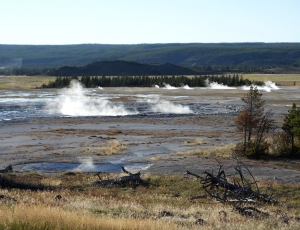













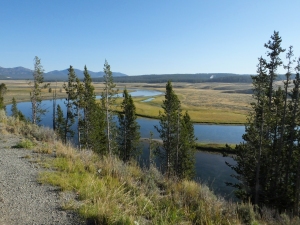





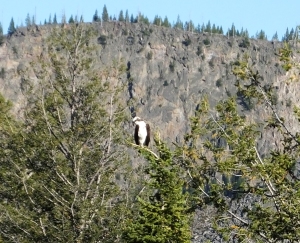
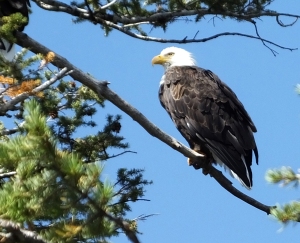
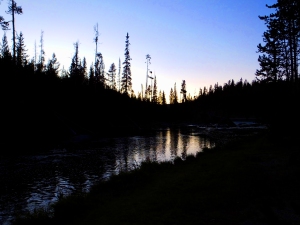

This is quite a wonderful post! Thank you for sharing all these!
LikeLike
Glad you enjoyed it…it took forever. I was afraid it was too long, but some places have too much to offer to condense it all down to a few highlights.
LikeLike
Fantastic photos and excellent summary of a vast and awesome natural marvel. Thanks so much. 😀
LikeLike
Yes, good post, photos, and nice summary of so much that Yellowstone has to offer. Definitely not too long, but I do believe you that it took you a while to produce it!
LikeLike
Great photos! Made me feel a little homesick.
I love that last paragraph. When I think of my summer in Yellowstone with that perspective, it definitely makes it a lot more remarkable for me.
LikeLike
Pingback: The Struggle of my “Vacation” | Ranger Kaiti May